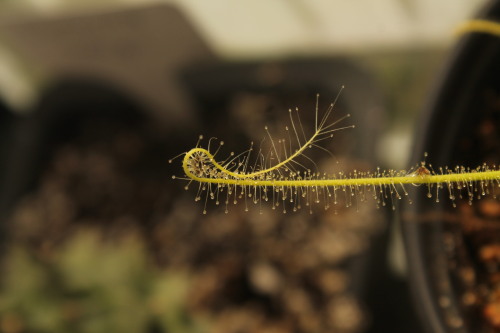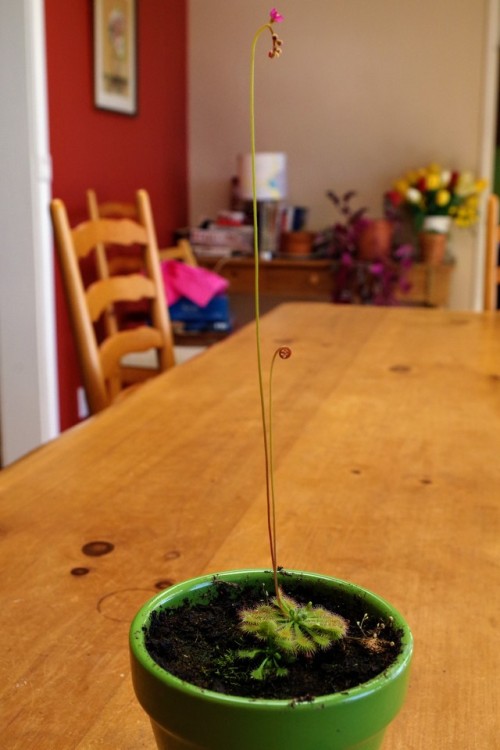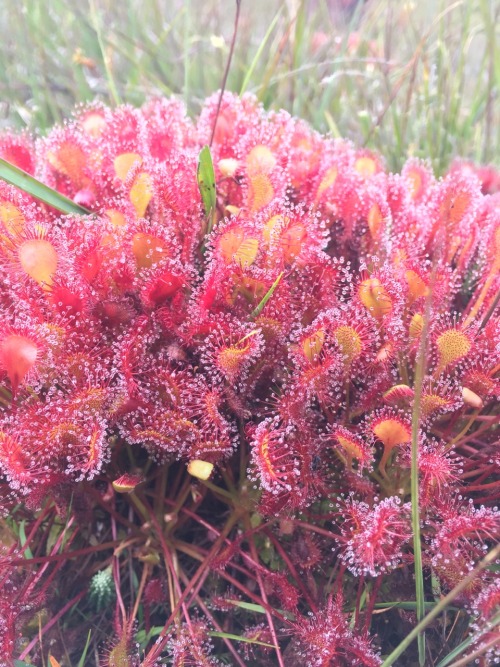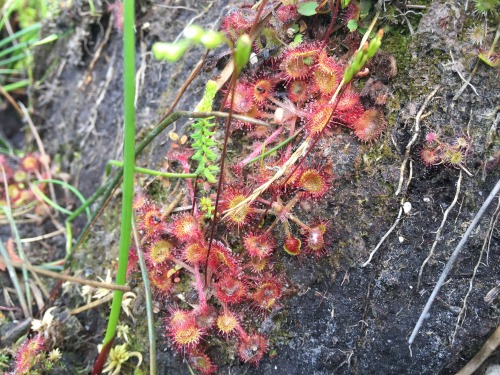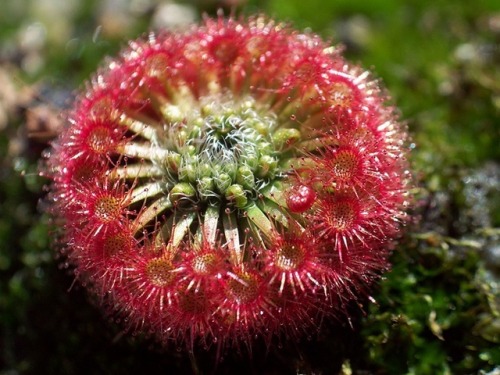#drosera
Sundew Catapults Prey into Trap
Drosera glanduligera is a species of sundew, a group of carnivorous plants that use sticky tentacles to ensnare their prey. This is species is unique in that it has extremely fast ‘snap tentacles’ which literally fling their prey into their sticky traps.
Sundews have evolved the ability to digest insects as an adaptation to their nutrient poor habitats. Once a prey is caught in the glue-like secretions, it either dies from exhaustion or asphyxiates from being smothered in dew. The plant then secretes enzymes which break down the insect, allowing the plant to absorb its nutrients.
All species of sundew are able to move their inner tentacles to pass prey towards the center of the leaf, where digestion is most efficient. Many species are able to fold the surface of the leaf around the prey to ensure contact with a larger digestive surface.
Drosera glanduligera is the fastest moving sundew, with ‘snap tentacles’ which fold inwards within 75 milliseconds. This action is triggered when an insect makes contact with them, and are powerful enough to catapult the insect into the center of the leaf, where it becomes glued down.
Gif from video: Poppinga, S. Et al. via Wikimedia Commons
Post link
Drosera finlaysoniana, the artist formerly known as Drosera indica. This sticky Australian native will eventually grow into one of the biggest, baddest sundews currently in cultivation. In warmer months, these plants climb 12″-24″+ and can catch things as strong as bottleflies and butterflies!
Post link
Roridula dentata, a resinous carnivorous plant native to South Africa. These plants eventually become medium-to-large shrubs, and have been know to snare small birds!
Post link
Drosera finlaysoniana wrapping itself around an insect in preparation for its leaf’s digestive phase.
Post link
It’s rude to eat your pollinators
Sundews (Drosera) are famous for eating bugs by trapping them in the sticky tentacles on their leaves.
Post link





In the alpine region of Victoria Australia, Drosera arcturiand Utricularia monanthos can be found growing together in sphagnum moss bogs.


A lil violet cape sundew bloom
This tropical drosera hybrid is unfurling a few new leaves in the center. I always love how they start out so tightly curled.
Post link
As you can see, the Drosera in the English bogs can either grow in very wet or more dry environments. These two could be found at the same bog sight.
Post link
Drosera paleacea always produces masses of flowers along their stems and my favorite part is the ombre effect of the color of the buds before they are open!
Post link
These little pygmy sundews, Drosera sargentii, look like a group of beach goers flying kites!
Post link

Native Drosera (sundew, a carnivorous plant) consuming a mosquito.
(small update)
Aerogardens are cool, but fruitflies are not.
Unfortunately, Husband’s aerogarden has been struck with a case of fruitfly infestation. I have a couple of sundews that I usually keep outside but decided to bring one in and change them out as needed. Most of the time, they’re self sufficient with catching their own food but need the occasional watering. The sweet mucilage, or dew drops, works as the perfect evolutionary lure.
Pictured is a sundew I just recently changed out. Besides the larger insects, you can see each individual fly within the traps. Each brown dot is an individual that met their sticky and slow doom.
Pretty great silver lining if you ask me :D
Post link


pretty pretty carnivores. Wrocławski Ogród Botaniczny, august 2021
New Video: All About Carnivorous Droseras!
Claire talks more in depth about sundews, the carnivorous members of the genus Drosera.
LE Rainbow Bee Tee: http://bit.ly/rainbowbee
Patreon:http://bit.ly/bbpatreon
Merch:http://bit.ly/brillbotshop
This is the growing inflorescence on my sundew plant. Carnivorous plants generally have very tall flowers, so that their pollinators don’t get stuck to their sticky surface (in the case of a sundew).
Photo by Brilliant Botany.
Post link





